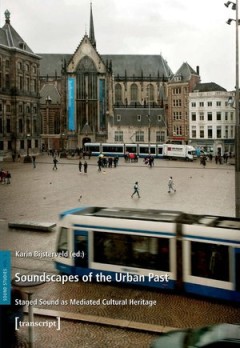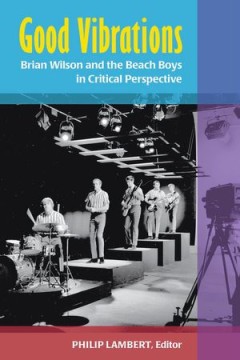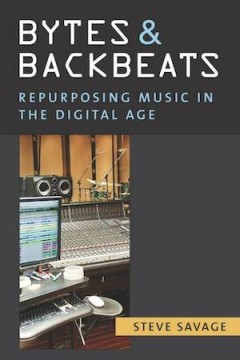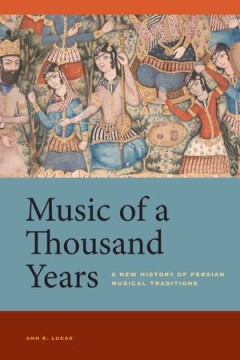Filter by

Soundscapes of the Urban Past: Staged Sound as Mediated Cultural Heritage
We cannot simply listen to our urban past. Yet we encounter a rich cultural heritage of city sounds presented in text, radio and film. How can such 'staged sounds' express the changing identities of cities? This volume presents a collection of studies on the staging of Amsterdam, Berlin and London soundscapes in historical documents, radio plays and films, and offers insights into themes such a…
- Edition
- -
- ISBN/ISSN
- 9783837621792
- Collation
- -
- Series Title
- -
- Call Number
- 780

Landscapes of Music in Istanbul: A Cultural Politics of Place and Exclusion
Everyday articulations of music, place, urban politics, and inclusion/exclusion are powerfully present in Istanbul. This volume analyzes landscapes of music, community, and exclusion across a century and a half. An interdisciplinary group of scholars and artists presents four case studies: the rembetika, the music of the Asiks, the Zakir/Alevi tradition, and hip-hop, in Beyoglu, Üsküdar, the…
- Edition
- -
- ISBN/ISSN
- 9783839433584
- Collation
- -
- Series Title
- -
- Call Number
- 780

The Origins of Western Notation
Modern music notation developed out of the so-called square notation and this out of the Latin neumes. The question of where these neumes came from has long been the subject of scholarly debate. As the author demonstrated in his three-volume Universale Neumenkunde published in German in 1970, there is a very close relationship between the Paleo-Byzantine notation and the Latin neumes. Although …
- Edition
- -
- ISBN/ISSN
- 9783631615591
- Collation
- -
- Series Title
- -
- Call Number
- 780

Popular Music and Public Diplomacy: Transnational and Transdisciplinary Persp…
In the early years of the Cold War, Western nations increasingly adopted strategies of public diplomacy involving popular music. While the diplomatic use of popular music was initially limited to such genres as jazz, the second half of the 20th century saw a growing presence of various popular genres in diplomatic contexts, including rock, punk, reggae, and hip-hop. This volume illuminates the …
- Edition
- -
- ISBN/ISSN
- 9783837643589
- Collation
- -
- Series Title
- -
- Call Number
- 780

Good Vibrations: Brian Wilson and the Beach Boys in Critical Perspective
Good Vibrations brings together scholars with a variety of expertise, from music to cultural studies to literature, to assess the full extent of the contributions to popular culture and popular music of one the most successful and influential pop bands of the twentieth century. The book covers the full fifty-year history of the Beach Boys’ music, from essays on some of the group’s best-know…
- Edition
- -
- ISBN/ISSN
- 9780472119950
- Collation
- -
- Series Title
- -
- Call Number
- 780

Bytes and Backbeats: Repurposing Music in the Digital Age
From Attali's "cold social silence" to Baudrillard's hallucinatory reality, reproduced music has long been the target of critical attack. In Bytes and Backbeats, however, Steve Savage deploys an innovative combination of designed recording projects, ethnographic studies of contemporary music practice, and critical analysis to challenge many of these traditional attitudes about the creation and …
- Edition
- -
- ISBN/ISSN
- 9780472117857
- Collation
- -
- Series Title
- -
- Call Number
- 780

Music Practices Across Borders: (E)Valuating Space, Diversity and Exchange
Klavier plus Streichquartett. Im vierstelligen Bereich sind Werke bekannt. In mittlerer dreistelliger Zahl als Tonaufnahme zugänglich. Über 200 Jahre kontinuierliche Produktion. Bis heute. Und doch fehlt das Genre weitgehend in den Leitmedien Klassischer Musik. In den meinungsführenden Feuilletons und Musikgeschichtswerken. Und in den Programmen der prestigeträchtigen Rundfunksender und Lab…
- Edition
- -
- ISBN/ISSN
- 9783837646672
- Collation
- -
- Series Title
- -
- Call Number
- 780

Improvisation and Social Aesthetics
Addressing a wide range of improvised art and music forms—from jazz and cinema to dance and literature—this volume's contributors locate improvisation as a key site of mediation between the social and the aesthetic. As a catalyst for social experiment and political practice, improvisation aids in the creation, contestation, and codification of social realities and identities. Amon…
- Edition
- -
- ISBN/ISSN
- 9780822361787
- Collation
- -
- Series Title
- -
- Call Number
- 780

Music of a Thousand Years: A New History of Persian Musical Traditions
Iran’s particular system of traditional Persian art music has been long treated as the product of an ever-evolving, ancient Persian culture. In Music of a Thousand Years, Ann E. Lucas argues that this music is a modern phenomenon indelibly tied to changing notions of Iran’s national history. Rather than considering a single Persian music history, Lucas demonstrates cultural dissimilarity an…
- Edition
- -
- ISBN/ISSN
- 9780520972032
- Collation
- -
- Series Title
- -
- Call Number
- 780

Modernizing Composition: Sinhala Song, Poetry, and Politics in Twentieth-Cent…
The study of South Asian music falls under the purview of ethnomusicology, whereas that of South Asian literature falls under South Asian studies. As a consequence of this academic separation, scholars rarely take notice of connections between South Asian song and poetry. Modernizing Composition overcomes this disciplinary fragmentation by examining the history of Sinhala-language song and poet…
- Edition
- -
- ISBN/ISSN
- 9780520967755
- Collation
- -
- Series Title
- -
- Call Number
- 780
 Computer Science, Information & General Works
Computer Science, Information & General Works  Philosophy & Psychology
Philosophy & Psychology  Religion
Religion  Social Sciences
Social Sciences  Language
Language  Pure Science
Pure Science  Applied Sciences
Applied Sciences  Art & Recreation
Art & Recreation  Literature
Literature  History & Geography
History & Geography